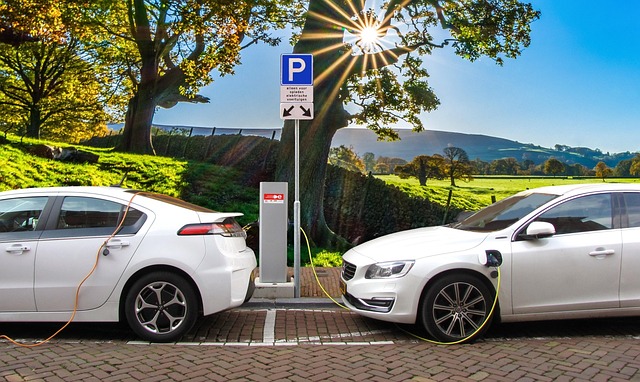Looking to register your car in California? Navigating the process can be straightforward with the right preparation. This guide breaks down the California car registration process, from understanding the requirements to gathering all necessary documents. Learn how to leverage a DMV VIN verifier for seamless verification and follow our step-by-step instructions for a successful registration at the DMV. Additionally, discover post-registration tasks and important considerations to ensure your vehicle is legally compliant on California roads.
- Understanding the California Car Registration Process
- Gathering Necessary Documents for Registration
- How to Use a DMV VIN Verifier in California
- Step-by-Step Guide: Registering Your Vehicle at the DMV
- Post-Registration Tasks and Important Considerations
Understanding the California Car Registration Process

Understanding the California Car Registration Process
In California, car registration is a crucial step after purchasing a vehicle. The process involves several key steps, including obtaining necessary documents and passing a Vehicle Identification Number (VIN) inspection. Initially, you’ll need to visit a California Department of Motor Vehicles (DMV) office or utilize their online services to initiate the registration. Here, you’ll provide essential details about your vehicle and new owner information. One significant aspect is the VIN inspection, which can be conducted at an authorized location or, for added convenience, through mobile vin verification services.
The DMV offers various methods for registration, including traditional in-person visits and digital platforms. For a streamlined experience, some residents opt for mobile vin inspection, allowing professionals to perform the necessary checks remotely. This modern approach reflects California’s commitment to efficient, accessible vehicle registration processes while ensuring compliance with state standards.
Gathering Necessary Documents for Registration

Before you start the registration process, it’s crucial to gather all the essential documents required by the California Department of Motor Vehicles (DMV). This includes your vehicle’s registration certificate from the previous state, a valid driver’s license, proof of insurance, and, most importantly, a Vehicle Identification Number (VIN) verifier. Utilize a trusted mobile vin verification service to obtain this crucial piece of information quickly and accurately. The VIN is a unique identifier for your car, which plays a vital role in the registration process.
Additionally, you’ll need a completed DMV Form REG-123, which is the Application for Vehicle Registration, along with any applicable fees. Ensure that all documents are up-to-date and accurate to avoid delays during the vin inspection process. Properly gathering and preparing these materials will make your car registration in California a smooth and efficient experience.
How to Use a DMV VIN Verifier in California

In California, using a DMV VIN Verifier is a straightforward process that allows vehicle owners to validate important information about their car’s history. This service is particularly useful when registering a used vehicle, as it ensures the vehicle hasn’t been reported stolen or has any outstanding issues. To use this tool, simply visit the California DMV website and locate the VIN Verifier section. Input your vehicle’s unique Vehicle Identification Number (VIN) and access detailed data including the make, model, year, and even previous owners.
For a more convenient option, consider using mobile vin inspection or mobile vin verification services. These services offer a similar level of scrutiny as the DMV VIN Verifier but can be conducted from the comfort of your home or location of choice. A mobile vin verifier typically involves a trained professional visiting you to perform an on-site inspection and provide immediate results, streamlining the registration process even further.
Step-by-Step Guide: Registering Your Vehicle at the DMV

Registering your vehicle with the California DMV (Department of Motor Vehicles) is a straightforward process that involves several key steps. Begin by gathering all necessary documents, including your vehicle’s registration certificate from the previous state, proof of insurance, and identification documents like a valid driver’s license or state ID card. Next, visit a local DMV field office or use their online services to initiate the registration process. You’ll need to provide your Vehicle Identification Number (VIN) which can be easily verified using a DMV VIN verifier for accuracy.
After confirming your VIN and other details, you’ll be prompted to choose a registration period and pay the required fees. For a smooth experience, consider conducting a mobile vin inspection or using a mobile vin verifier before visiting the DMV to ensure all information is correct, saving time and potential delays.
Post-Registration Tasks and Important Considerations

After successfully registering your vehicle with the DMV, there are several key tasks to complete to ensure a smooth ownership experience. One crucial step is obtaining a Vehicle Identification Number (VIN) verification report. This process involves using a reliable dmv vin verifier or mobile vin verifier to check the vehicle’s history and ensure it’s free from any legal issues or hidden damage. A quick vin inspection can save you time, money, and potential heartache in the long run.
Additionally, consider updating your registration details with the DMV, including ensuring your contact information is accurate. This is essential for receiving important notifications and reminders about registration renewals, emissions tests, and any other required maintenance or legal obligations associated with your vehicle. Remember to keep your documentation organized, as you may need it for future mobile vin verification processes or insurance claims.
Registering a car in California is a straightforward process that requires gathering essential documents and adhering to specific steps. Utilizing the DMV’s VIN verifier can simplify the initial verification stage, making it easier for owners to ensure their vehicle’s compliance. By following the step-by-step guide provided and considering post-registration tasks, you’ll efficiently navigate California’s car registration process, ensuring your vehicle is legally registered and ready to hit the road.
